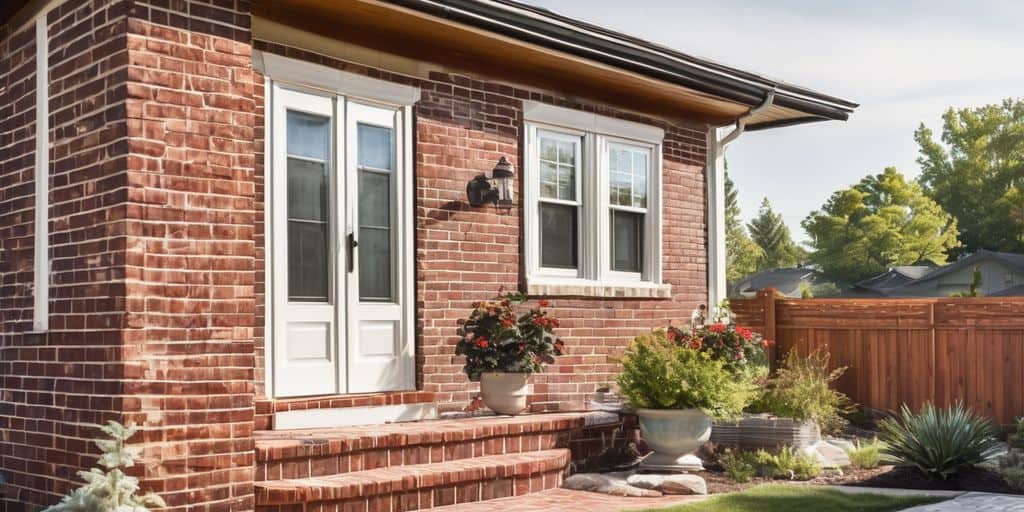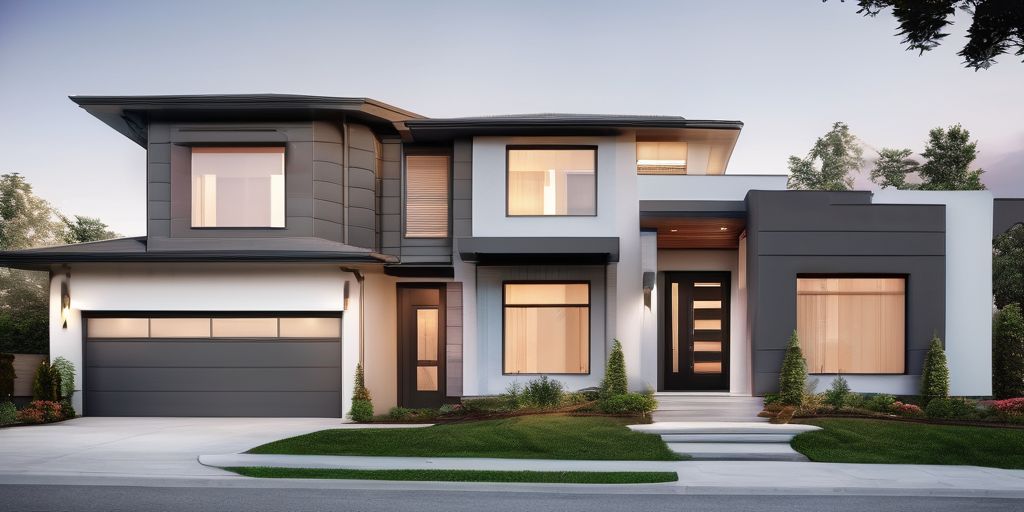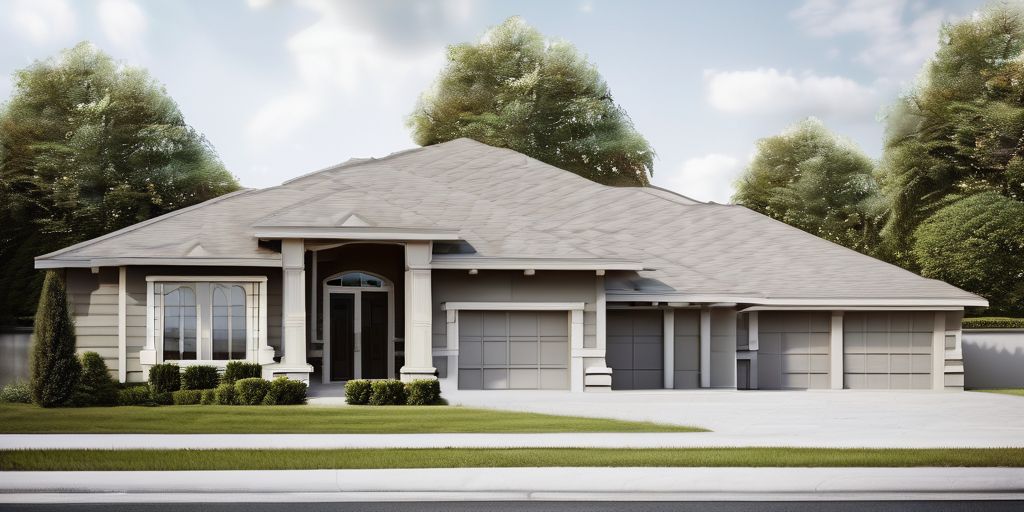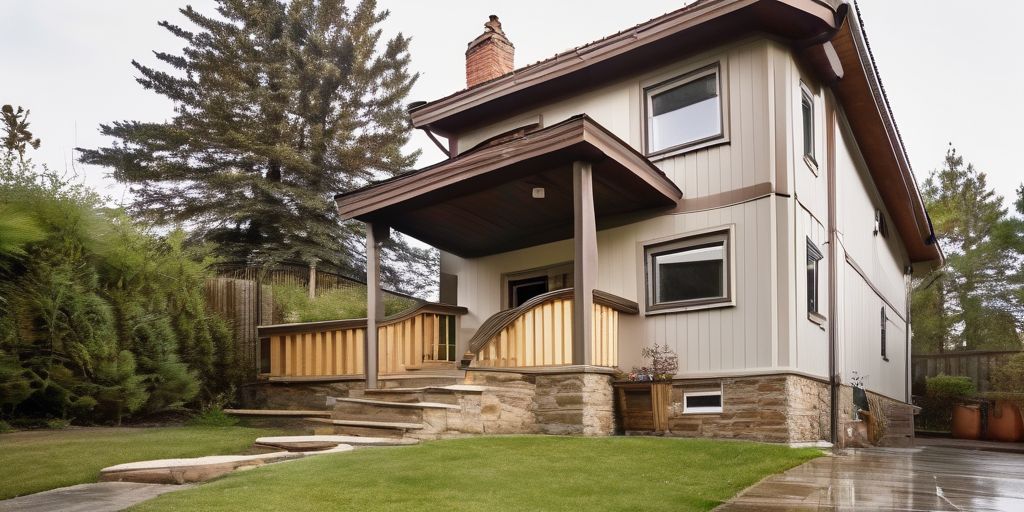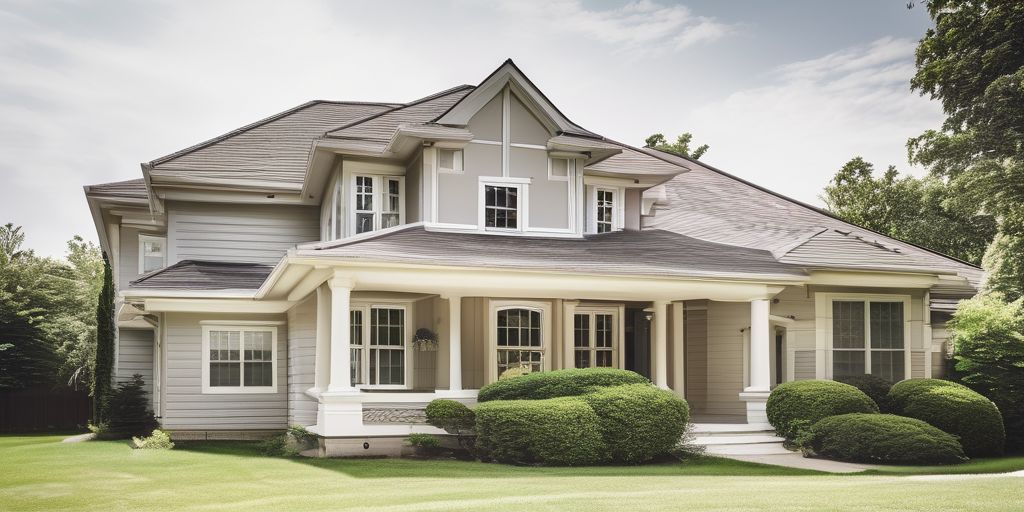Understanding the impact of weathering and taking proactive steps can help homeowners preserve the aesthetic appeal and structural integrity of their painted brick homes. The weather conditions in your location play a significant role in the longevity and appearance of your paint job. This article delves into the various aspects of how weather affects painted brick, the best times to paint, eco-friendly paint options, and maintenance tips to ensure your exterior brick remains beautiful and durable.
Key Takeaways
- Weather conditions play a crucial role in the longevity and appearance of painted brick.
- Choosing the right time and weather conditions for painting can significantly impact the quality and durability of the finish.
- Eco-friendly paints with low VOCs and natural ingredients are beneficial for both the environment and the longevity of your paint job.
- Proper protection and maintenance can prevent weather-related damage such as moisture retention and UV degradation.
- Balancing aesthetic desires with environmental considerations is essential for a responsible and durable painting project.
Understanding Weather’s Impact on Painted Brick
Hot and Dry Climates
In hot and dry climates, painted brick can face several challenges. High temperatures can cause the paint to dry too quickly, leading to cracks and peeling. Additionally, the intense heat can make the brick expand, which may result in further damage to the paint layer. To mitigate these issues, consider painting during cooler parts of the day and using paint that is specifically formulated for high temperatures.
Cold and Wet Conditions
Cold and wet conditions can be equally problematic for painted brick. Moisture can seep into the brick, causing the paint to bubble and peel. Moreover, freezing temperatures can make the brick contract, leading to cracks in the paint. It’s essential to ensure that the brick is completely dry before painting and to use moisture-resistant paint to protect against these issues.
Seasonal Changes
Seasonal changes can also impact the longevity of your painted brick. The transition from hot to cold weather can cause the brick to expand and contract, which may lead to paint damage. Additionally, seasonal rains can introduce moisture into the brick, exacerbating the risk of paint peeling. To combat these effects, regular maintenance and touch-ups are recommended to keep your painted brick looking its best.
By understanding the impact of weathering and taking proactive steps, homeowners can preserve the aesthetic appeal and structural integrity of their painted brick homes.
Choosing the Best Time to Paint Your Brick House
Optimal Seasons for Painting
Timing your painting project during the best seasons can significantly impact the quality of the finish. The ideal seasons for painting exterior brick are late spring and early fall. These periods offer mild temperatures and lower humidity levels, which are perfect for painting. Patience and attention to detail during these times ensure professional results.
Ideal Weather Conditions
When painting your brick house, choosing the right weather conditions is crucial for achieving a long-lasting and even finish. Optimal weather conditions include:
- Mild temperatures (50°F to 85°F)
- Low humidity levels
- Overcast skies or shaded areas to avoid direct sunlight
Addressing moisture issues and selecting the right paint color can enhance the aesthetic appeal and durability of your brick house.
Timing Your Project
Timing your project to avoid extreme weather conditions is essential. Hot and dry climates can cause the paint to dry too quickly, leading to an uneven finish. Cold and wet conditions can prevent the paint from adhering properly. Adjusting to seasonal temperature variations is crucial for successful brick painting. Consider weather conditions for durable finishes and choose appropriate paints and tools for each season.
For the best results, plan your painting project with the weather forecast in mind. This will help you avoid any unexpected weather-related issues and ensure a smooth and lasting finish.
Eco-Friendly Paint Options for Exterior Brick
When it comes to painting exterior brick, opting for eco-friendly paints can make a significant difference for both your health and the environment. Here are some key considerations:
Low VOC Paints
Low VOC (Volatile Organic Compounds) paints are a popular choice for eco-conscious homeowners. These paints release fewer harmful chemicals into the air, making them safer for both the environment and your indoor air quality. Most zero-VOC paints available in the U.S. are acrylic or latex-based. This makes them a direct alternative to traditional paints, offering similar durability and finish without the environmental drawbacks.
Natural Ingredients
Paints made from natural ingredients are another excellent option. These paints often include components like plant oils, clay, and chalk, which are not only sustainable but also biodegradable. Choosing paints with natural ingredients can reduce your carbon footprint and contribute to a healthier planet.
Benefits of Eco-Friendly Paints
Opting for eco-friendly paints comes with several benefits:
- Reduced environmental impact
- Improved indoor air quality
- Safer for families and pets
- Often made from sustainable resources
An exterior painter who prioritizes eco-friendly options can help you achieve a beautiful, long-lasting finish while minimizing environmental harm.
By considering these eco-friendly paint options, you can make a responsible choice that benefits both your home and the planet.
Protecting Your Brick from Weather Damage
Moisture Barriers
To safeguard your brick from moisture, consider applying a high-quality weather barrier. This can prevent damage from rain, snow, and ice. Quality exterior paint acts as a shield, keeping moisture out and preserving the integrity of your home.
UV Protection
UV rays can cause significant fading and deterioration of your brick. Using paint that offers UV protection can help maintain the vibrant color and durability of your exterior. UV-resistant paints are specifically designed to combat the harmful effects of the sun.
Preventing Paint Peeling
To avoid paint peeling, it’s crucial to prepare the brick surface properly before painting. This includes cleaning the surface thoroughly, repairing any cracks, and applying a primer. Additionally, choosing a paint that is labeled as UV-resistant can help prevent degradation from the sun’s rays.
By understanding the impact of weathering and taking proactive steps, homeowners can preserve the aesthetic appeal and structural integrity of their painted brick homes.
Maintaining Your Painted Brick in Different Climates
Routine Inspections
Regular inspections are essential to ensure the longevity of your painted brick. Check for signs of wear and tear, such as cracks, peeling, or fading. Pay special attention to the influences of mortar types on the paint’s durability. Early detection can save you from more extensive repairs down the line.
Touch-Up Tips
Touching up your painted brick can keep it looking fresh and vibrant. Here are some tips:
- Use high-grade acrylic latex paint for touch-ups.
- Ensure the surface is clean and dry before applying new paint.
- Apply a weather-resistant primer before painting.
Long-Term Care
Long-term care involves more than just occasional touch-ups. Consider these steps:
- Clean the brick surface regularly to remove dirt and mildew.
- Repaint every 3-5 years to maintain a fresh appearance.
- Use protective coatings to shield the paint from harsh weather conditions.
Adapting to seasonal temperatures is crucial for maintaining your painted brick. Proper surface preparation, including cleaning and priming, can lead to durable results even in varying climates.
Balancing Aesthetics and Environmental Considerations
Choosing the Right Colors
Selecting the perfect color for your exterior brick can be a delightful yet challenging task. Bold, vibrant colors can make your home stand out, while neutral tones offer a timeless appeal. Consider the surrounding environment and neighborhood aesthetics when making your choice. Additionally, think about how different colors will look under various lighting conditions throughout the day.
Historic Preservation
When painting historic brick homes, it’s crucial to respect the original architecture and color schemes. Opt for colors that complement the historic character of the building. This not only preserves the charm but also maintains the property’s value. Using historically accurate colors can also help in meeting local preservation guidelines.
Minimizing Environmental Impact
To reduce your environmental footprint, choose paints that are eco-friendly and have low VOCs. These paints are not only better for the environment but also for your health. Here are some tips to consider:
- Sustainable production: Choose paints from manufacturers that prioritize sustainable production methods, such as using renewable energy sources and reducing waste.
- Natural ingredients: Opt for paints made from natural ingredients to further minimize environmental impact.
- Proper disposal: Ensure that any leftover paint is disposed of properly to prevent harmful chemicals from entering the ecosystem.
Remember, the choices we make in maintaining our homes not only affect their appearance but also the health of our local ecosystem.
Balancing aesthetics and environmental considerations is crucial in modern home improvement projects. At We Paint Siding, we specialize in techniques that not only enhance the beauty of your home but also ensure long-lasting, eco-friendly results. Visit our website to learn more about our unique approach and get a free estimate today!
Conclusion
In conclusion, painting exterior brick involves a careful balance of aesthetic desires and environmental considerations. While a fresh coat of paint can enhance the look of your home, it’s essential to choose eco-friendly paints with low VOCs and sustainable ingredients to minimize environmental impact. Additionally, understanding how different weather conditions affect your paint job can help ensure longevity and reduce maintenance. By taking these factors into account, you can achieve a beautiful and durable finish that stands the test of time. Remember, thoughtful planning and the right choices can make all the difference in preserving the charm and integrity of your brick home.
Frequently Asked Questions
How does weather influence the longevity of exterior brick paint?
Weather conditions play a significant role in the longevity and appearance of your painted brick. Hot and dry climates can cause paint to crack and peel, while cold and wet conditions can lead to moisture retention and damage. Seasonal changes also impact the durability of the paint.
What are eco-friendly paint options for brick?
Eco-friendly paint options for brick include low VOC paints and those made from natural ingredients. These paints minimize environmental impact and are safer for both the environment and your health.
When is the best time to paint my brick house?
The best time to paint your brick house is during mild weather conditions, typically in the spring or fall. Avoid painting during extreme temperatures or high humidity to ensure the best results.
How can I protect my painted brick from weather damage?
To protect your painted brick from weather damage, use moisture barriers and UV-resistant paints. Regular maintenance, such as routine inspections and touch-ups, can also help prolong the life of your paint job.
What are the benefits of using eco-friendly paints?
Eco-friendly paints offer several benefits, including lower levels of harmful VOCs, reduced environmental impact, and improved indoor air quality. They are also often made from sustainable materials.
How do I maintain my painted brick in different climates?
Maintaining painted brick in different climates involves routine inspections, timely touch-ups, and long-term care strategies. Addressing issues like moisture retention and UV exposure promptly can help extend the life of your paint job.

